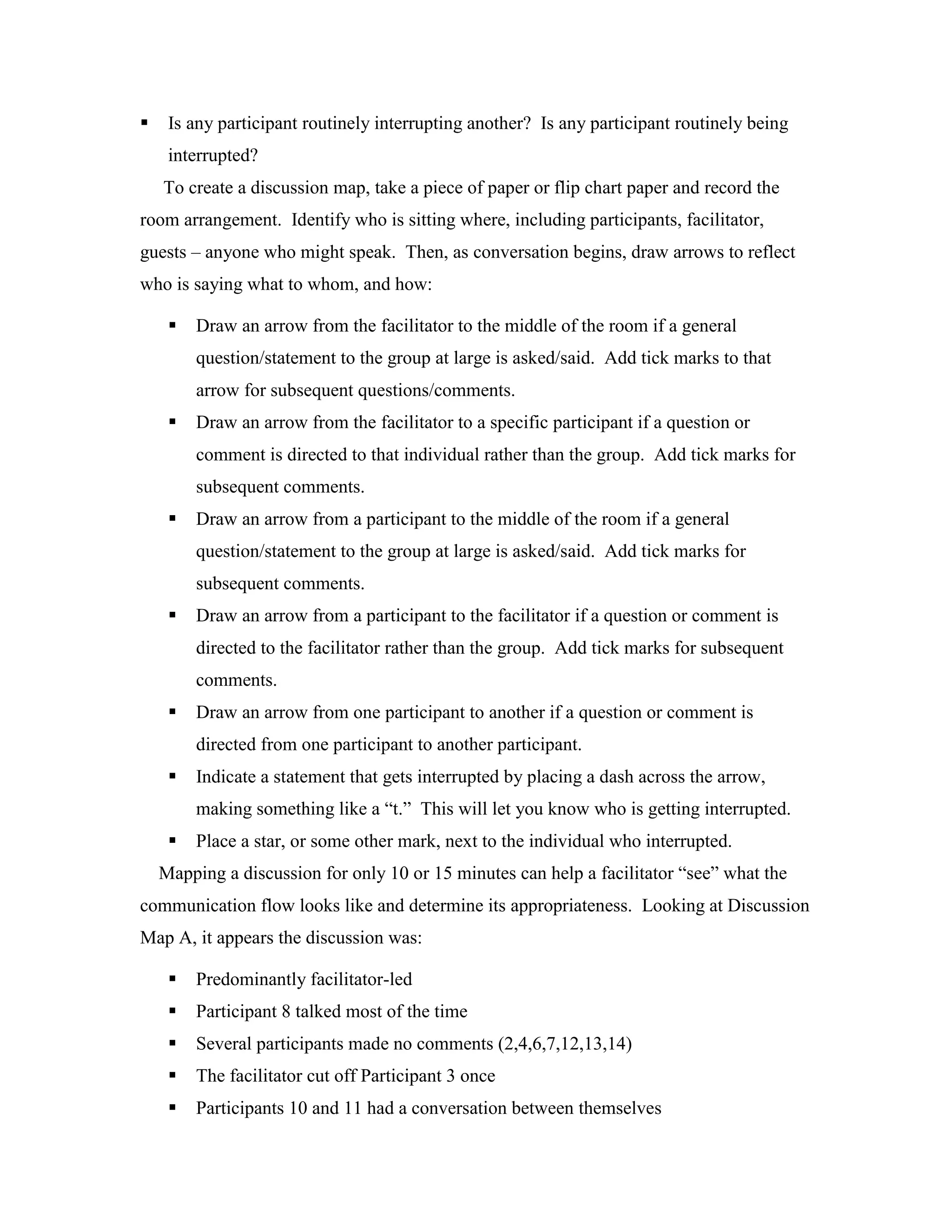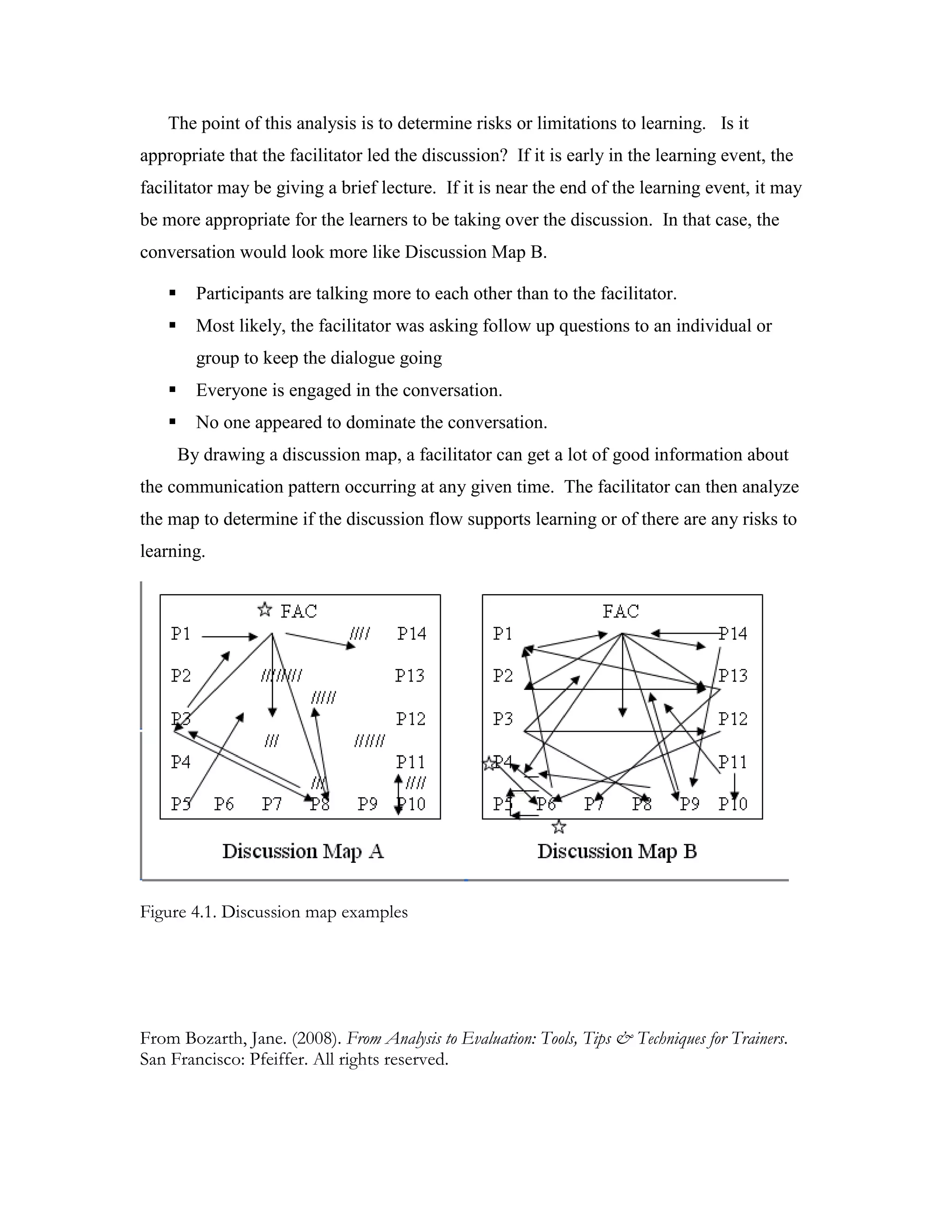This document describes the technique of mapping discussion flow to evaluate interactions in training sessions. A discussion map visually depicts who is communicating with whom through arrows and annotations. Mapping for 10-15 minutes provides facilitators insight into: the balance of participant vs. facilitator contributions; which participants are dominating or not contributing; and instances of interruption. The maps can then be analyzed to determine if the discussion flow supports learning goals or presents risks. Used effectively, discussion mapping provides facilitators a valuable tool for self-evaluation and improvement.


